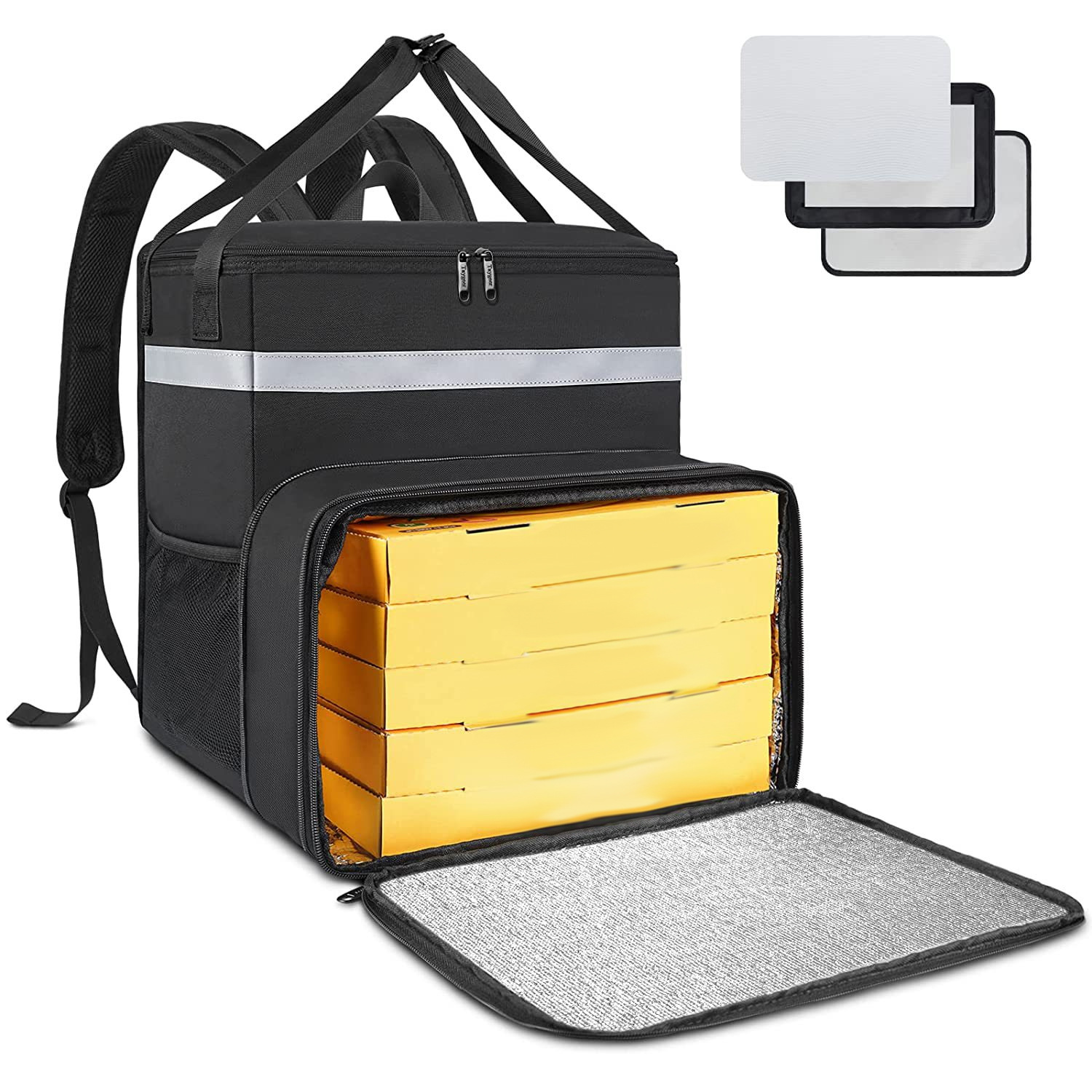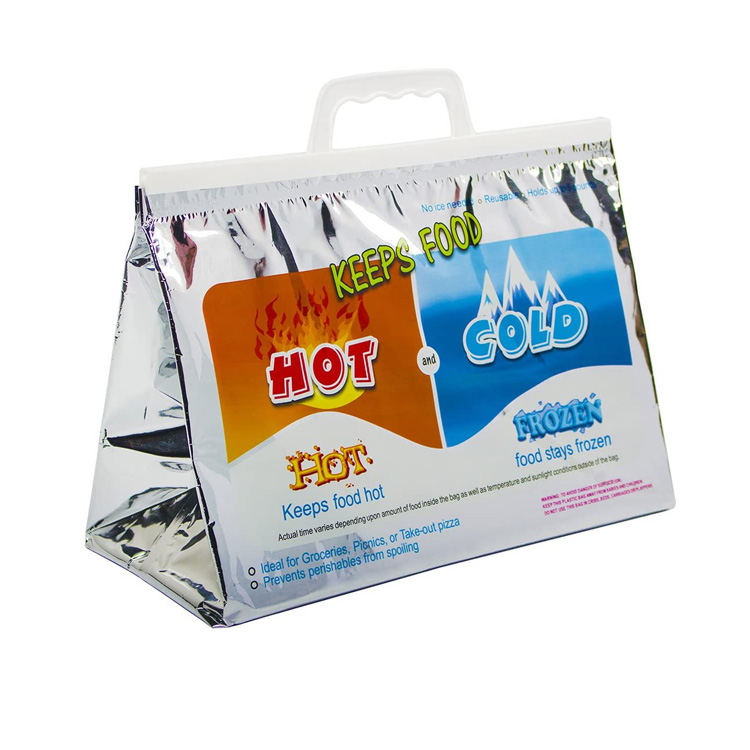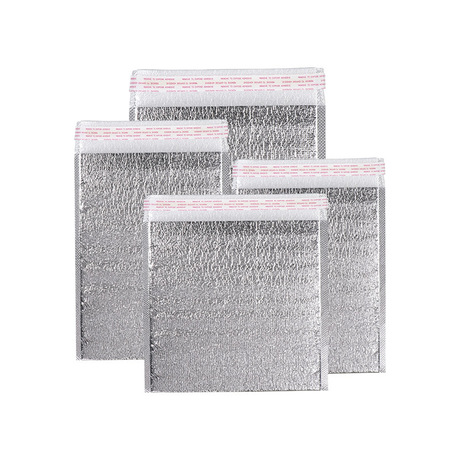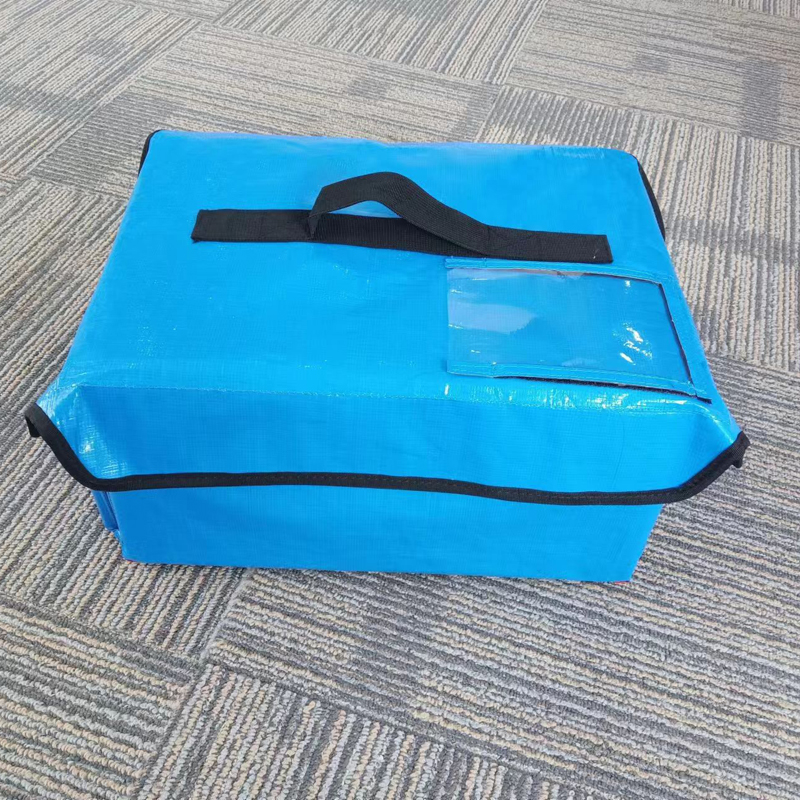Insulated bags are special packaging tools designed to maintain the temperature of food, minuman, and other items. These bags slow down the temperature change of their contents and are widely used in various fields such as food delivery, cold chain logistics, aktivitas luar ruangan, and medical transport.
1. Definition and Types of Insulated Bags
Insulated bags are made with multiple layers, including outer materials like Oxford cloth or nylon, inner waterproof layers, and insulating layers like EPE foam or aluminum foil. These layers work together to provide efficient insulation, making the bags ideal for maintaining the temperature of items, whether for keeping food hot or cold.
Types of Insulated Bags:
- Food Insulation Bags: Used for keeping food warm or cold during transport.
- Beverage Insulation Bags: Designed specifically for maintaining the temperature of drinks.
- Medical Insulation Bags: Used for transporting temperature-sensitive medications and vaccines.
- General Insulation Bags: Suitable for various items that require temperature control during transport.
2. Use Scenarios for Insulated Bags
Insulated bags are versatile and can be used in various scenarios, termasuk:
- Food Delivery and Transportation: Keeping food at the right temperature during delivery to ensure it arrives fresh and hot.
- Cold Chain Logistics: Transporting temperature-sensitive items like medicines and vaccines in a controlled environment.
- Daily Life: Storing food and drinks during picnics or shopping to maintain their temperature.
- Medical Field: Transporting medical samples, drugs, and vaccines while maintaining their required temperature.
3. Tips for Using Insulated Bags
To ensure the best performance from insulated bags, consider the following tips:
- Choose the Right Bag: Select a bag suitable for the specific temperature and time requirements.
- Properly Pack Items: Fill the bag to minimize air gaps, which can lead to heat transfer.
- Pre-Cool or Pre-Heat the Bag: This helps enhance the bag’s insulation effect.
- Seal the Bag Tightly: Ensure that zippers or Velcro closures are fully sealed to prevent air exchange.
- Regular Cleaning: Clean the bag regularly, especially the interior, to maintain hygiene and effectiveness.
4. Enhancing Insulation Performance
To improve the insulation performance of insulated bags, you can use auxiliary materials such as:
- Ice Packs or Plates: Provide an additional cold source for prolonged cooling.
- Thermos Bottles: For hot drinks, using a thermos inside the insulated bag can extend the temperature retention time.
- Insulation Pads or Boards: These can be placed inside the bag to further reduce heat transfer.
- Phase-Change Materials (PCM): Used to absorb or release heat at specific temperatures, extending the bag’s insulation capabilities.
5. Future Trends in Insulated Bags
The future development of insulated bags will focus on:
- Material Innovation: Using advanced materials like nanomaterials or vacuum insulation panels for better performance.
- Intelligent Technology: Integrating smart temperature control systems and sensors to monitor and adjust temperatures in real-time.
- Environmental Sustainability: Emphasizing the use of biodegradable materials and enhancing recyclability.
- Multi-functionality: Designing bags with multiple temperature zones and modular components for various uses.
- Market Demand: Responding to the growing need for cold chain logistics and personalized products.
Sebagai kesimpulan, insulated bags play a critical role in maintaining temperature control for various applications. By selecting the right bag and using it properly, you can ensure the safety and quality of your items during transport. Seiring dengan kemajuan teknologi, insulated bags will continue to evolve, offering better performance and more versatility.

























